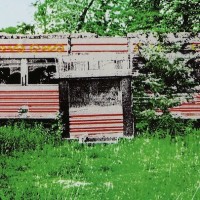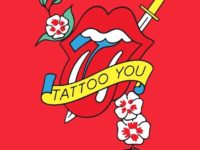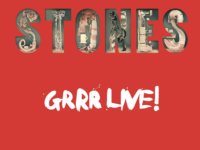Live recordings provided fizzy new insights, even as they gave voice to the continuing aspirations of some pretty big rock stars. Reissues provided us with insight into both reliable old favorites and at least one largely forgotten gem on this Mid-Year Best of 2015 list.
Jeff Beck still hasn’t put out a new album since Emotion and Commotion in 2010, but his latest concert recording offers a taste of where he’s at creatively with the inclusion of some original material. John Oates, on the other hand, reclaimed a bit of the spotlight after a lengthy period of collaboration.
Meanwhile, a new Yes project ended up — in the wake of some sobering news about stalwart Chris Squire’s health — far more than what was promised. Initially, Like It Is: Yes at the Mesa Arts Center was seen as the live-album debut of current frontman Jon Davison. It’s since become a torrid reminder of Squire’s bass-playing brilliance.
We returned to an apex for Emerson Lake and Palmer, while offering a final goodbye to the Knack, a one-hit wonder that should have been anything but.
We explored an often-ignored period in the career of leading soul-jazz light Les McCann, even as we were blessed with reissues that offered fuller appreciations of key moments for both the Staple Singers and for Lead Belly.
Gov’t Mule took an opportunity on stage to both pay tribute to Pink Floyd, and to bravely recast their music during a period of loss for one of the era’s most inventive blues-based jam bands.
Then there was an expanded version of the Rolling Stones’ Sticky Fingers, which shown a bright light on an album we continue to rank among their two or three very best. See how they call fared as we kick off Nick DeRiso’s Mid-Year Best of 2015 list for reissues and concert recordings.
No. 10: JEFF BECK – LIVE+ (LIVE): A concert recording that touched on a variety of Jeff Beck’s career highlights — including a scorching take on “Going Down,” originally found on 1972’s Jeff Beck Group album — also, importantly, made room for some new stuff. After all, Beck hasn’t released an album of original music in five years, even while issuing a whopping five concert recordings since 2008. That makes a moment like “Tribal,” this scroungy update of the typical blues-rocking Beck song, crackle with expectation. At the same time, Jeff Beck’s new updates on this Mid-Year Best of 2015 entry offer brilliantly muscular reinventions of songs that were, of course, pretty damned perfect in the first place.
No. 9: EMERSON LAKE AND PALMER – TRILOGY (REISSUE): Trilogy, the third studio effort from Emerson Lake and Palmer, was a brilliant mix of multi-sectioned long-form compositions with punchier more digestible rock songs. In many ways, Keith Emerson, Greg Lake and Carl Palmer were in the right place at the right time. They arguably gathered as a threesome while peaking creatively. The marketplace was hungry for the kind of spectacular flights of musical fancy that ELP would eventually come to personify. In keeping, this Lake-produced project remains ELP’s best-ever charting U.S. release.
No. 8: YES – LIKE IT IS: YES AT THE MESA ARTS CENTER (LIVE): Most of the focus, fair or not, with Yes’ first concert project with Jon Davison was be on the singer. He, of course, played a major role in their most recent studio effort, but is only just now being included on Yes’ live recordings. There was, however, a lot more to Like It Is: Yes at the Mesa Arts Center, as the bracing news of bassist Chris Squire’s serious illness continues to reverberate. The project gave us another intriguing opportunity to fully explore Squire’s genius at the bass.
No. 7: THE KNACK – NORMAL AS THE NEXT GUY (LIVE): This lost Knack finale started out less as a final run up that Sisyphean hill than side project for leader Doug Fieger. Prescott Niles and Berton Averre came in late to the project, adding some distinctively Knack-like touches to complete things — even as the trio stretched in surprising ways, since the material had not originally been created within the confines of their shared legacy. It went nowhere, of course. The Knack’s post “My Sharona” efforts never did. This reissue gives us a chance to explore what we missed.
No. 6: LES McCANN – INVITATION TO OPENNESS (REISSUE): An invitation to exploring one of jazz’s more underappreciated figures, too. Les McCann had risen to fame, of course, in an acoustic jazz trio setting, playing R&B-drenched music. By the turn of the ’70s, however, McCann had become enamored with the day’s emerging mainstream soul sounds, principally that of the electric piano. That led to a too-often-forgotten experiment with a 13-member group who improvised for producer Joel Dorn around a few loose themes, very much in the style of Miles Davis’ contemporaneous recordings — and with a similarly talented all-star cast. This Mid-Year Best of 2015 entry is the sound of someone loosing himself from the bonds of expectation, and certainly from the oft-staid strictures of soul jazz.
No. 5: LEAD BELLY – LEAD BELLY: SMITHSONIAN-FOLKWAYS COLLECTION (REISSUE): Best remembered for songs such as “The Midnight Special” and “Goodnight Irene,” Lead Belly’s legacy has been bolstered more recently through the release of long-lost music recorded for Folkways between 1941-47. The bulk of those recordings was issued in the late-1990s. Turns out, there’s more where that came from. Those earlier discs have been bolstered by 16 remarkable, previously unheard moments like “Been So Long [Bellevue Hospital Blues]” and “Princess Elizabeth,” one about his final illness and the other both literally and figuratively a world away from the piney woods of his life in the Deep South.
No. 4: GOV’T MULE – DARK SIDE OF THE MULE (LIVE): The best cover songs build in a personal viewpoint, using early inspirations as a foundation for something that feels both old and new. Gov’t Mule’s Dark Side of the Mule, recorded at Boston’s Orpheum Theatre on Halloween 2008 as leader Warren Haynes was still trying to make sense of the sudden death of Allen Woody, did just that with the music of Pink Floyd. Perhaps as expected, the bulk of the material was derived from Dark Side of the Moon. But those six songs were coupled with a generous selection from elsewhere. The album’s most lasting moments, in fact, arrived courtesy of Wish You Were Here, rather than Dark Side. Along the way, Gov’t Mule paid tribute to the past without being shackled to it.
No. 3: STAPLE SINGERS – FREEDOM HIGHWAY COMPLETE (REISSUE): By April 9, 1965, as the Staple Singers set up at the New Nazareth Church in Chicago to record the album that would become Freedom Highway, the group had moved far afield of its original gospel roots. Galvanized by the emerging Civil Rights movement, Roebuck “Pops” Staples and family offered a series of stirring protest songs like “March Up Freedom’s Highway,” “Why? (Am I Treated So Bad),” and “Washington is a Long Walk To D.C.” — moments that helped frame the era. Still, as this concert made viscerally clear, the Staple Singers could still rattle the back pews. The original album release had been long out of print, however, with only two songs recently available via a 1999 Epic compilation – until now.
No. 2: ROLLING STONES – STICKY FINGERS (REISSUE): As the dream of the 1960s died, something changed in bands like the Rolling Stones, too. The broader loss felt by dreams deferred played out in microcosm as they struggled to overcome the death of Brian Jones, extricated themselves from their old management in order to found their own label, and tried to move on after the disastrous aftermath of Altamont. That the Rolling Stones would put out what was, for me, their best album during this time of transition seems almost laughably unlikely. They did it by swinging, alternately, between a kind of reckless abandon and this devastating introspection — perfectly in keeping, actually, with the decade to come.
No. 1: JOHN OATES – ANOTHER GOOD ROAD (LIVE): The recent Good Road to Follow project — a sweeping testament to passion and aptitude across a dizzying range of styles — showed that matching John Oates up against acknowledged masters like Vince Gill and Jim Lauderdale brought out the best in both. This Mid-Year Best of 2015 charttopper returned the focus squarely back to Oates as a performer. It also gives us new perspective on an exciting period of musical growth, via the bonus disc’s interviews with John Oates and his more recent collaborators. He’s clearly sparked by all of this but, importantly, so were they.
- How Deep Cuts on ‘Music From Big Pink’ Underscore the Band’s Triumph - July 31, 2023
- How ‘Islands’ Signaled the Sad End of the Band’s Five-Man Edition - March 15, 2022
- The Band’s ‘Christmas Must Be Tonight’ Remains an Unjustly Overlooked Holiday Classic - December 25, 2016




